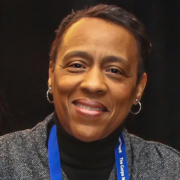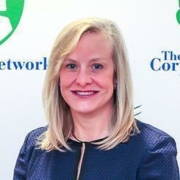By: Emma Fantuzzo
About the Corps Oral History Project:
The Corps movement dates to President Franklin D. Roosevelt’s Civilian Conservation Corps (CCC) of the 1930s – ‘40s. The CCC offered young, mostly white, men the opportunity to work and earn money during the Great Depression. The “CCC boys” planted billions of trees, built hundreds of parks, and established a legacy of conservation across the country.
While the CCC certainly provided a framework for modern Corps, it wasn’t until the 1970s and ‘80s that a new, more equitable, and ever-evolving Corps movement began to emerge. This oral history project gathers insights from the dreamers, innovators, and leaders who made today’s network of Service and Conservation Corps possible.
Dana’s Background:
 Dana Stein, the executive director of Civic Works, has been an influential member of the Corps world since the early 90s when he read about City Year, while working as a lawyer. Intrigued by the idea of Corps programming and the potential it had, Dana reached out to the National Association of Service and Conservation Corps (NASC), the predecessor of The Corps Network, for information on the Urban Corps Expansion Project. He also connected with Kathleen Kennedy Townsend who at the time was working on service-learning issues in Maryland. As Dana put it, “Long story short, she and I founded Civic Works, and we opened our doors in 1993. I quit practicing law and have been running it ever since.”
Dana Stein, the executive director of Civic Works, has been an influential member of the Corps world since the early 90s when he read about City Year, while working as a lawyer. Intrigued by the idea of Corps programming and the potential it had, Dana reached out to the National Association of Service and Conservation Corps (NASC), the predecessor of The Corps Network, for information on the Urban Corps Expansion Project. He also connected with Kathleen Kennedy Townsend who at the time was working on service-learning issues in Maryland. As Dana put it, “Long story short, she and I founded Civic Works, and we opened our doors in 1993. I quit practicing law and have been running it ever since.”
Over the years, Dana credits his various mentors from, San Francisco Conservation Corps, Montgomery County Conservation Corps, and City Year, for Civic Works’ success. He notes that the Corps community understands the importance of helping each other’s programs thrive – something that nonprofits in other sectors don’t always have the benefit of.
Today, Dana continues to serve as executive director of Civic Works, a Corps that has grown exponentially in size and program capacity. Civic Works performs not only Service and Conservation Work such as installing solar panels, mitigating stormwater runoff, and building parks, but also operates a school, providing secondary education opportunities for students in the Baltimore area. Civic Works serves as an inspiration for the potential that Corps, and Corps leaders, can achieve.
Dana’s Insights:
Q: What was the Corps Community like when you started?
Dana: It was certainly smaller. It was proportionally more focused on conservation. I think over the years there’s been a recognition of greater needs in different areas. There’s been a diversification of the types of issue areas that Corps have worked on. The key point of the timing for Civic Works, and I know for other Corps, was when AmeriCorps was started. AmeriCorps was signed in 1993, and then we became an AmeriCorps program and AmeriCorps was, I think, significant in providing startup funding. It helped prompt a lot of new Corps to get going.
Much of the DEI work that has happened, has happened in the past five years. But nonetheless, I think that the Corps was evolving in that direction and certainly has accelerated in the past five years. It is increasingly important work. Even before 2020, we had worked with consultants in DEI space. There’s a local group called the Association of Black Charities and we hired a consultant from there to make recommendations for improving our DEI policies. We just recently completed a consultancy with another expert in DEI work and made a series of recommendations. So Civic Works is taking those recommendations and is going to incorporate them into our practices. We are also implementing them into our strategic plan, which has a DEI focus. We have work to do, but we are hopeful that we will continue to make progress.
Q: What types of programming does Civic Works participate in?
Dana: Some of what we do might be considered urban conservation. We do some landscaping; we do urban farming which has a positive impact on green space. But a lot of our work is what you would consider to be service work. For example, I mentioned we have a high school, so we have probably 20 members that help the school by doing different things. We’ve done a lot of food distribution work. Probably 15 years ago we expanded to include working with older adults, helping them age in place through home repairs as well as social service work.
We’ve also expanded to do a lot of energy conservation work and now we’re doing more in terms of renewable energy through low-income solar installations. Traditionally, Civic Works has done more service as opposed to conservation work, but we work a lot in climate mitigation. Climate is the future. Long term, where Corps will be called upon to help and provide critical value, that’s in climate resilience.
Q: What would you say is your vision for the Corps movement as a whole?
Dana: Some of what we do might be considered urban conservation. We do some landscaping; we do urban farming which has a positive impact on green space. But a lot of our work is what you would consider to be service work. For example, I mentioned we have a high school, so we have probably 20 members that help the school by doing different things. We’ve done a lot of food distribution work. Probably 15 years ago we expanded to include working with older adults, helping them age in place through home repairs as well as social service work.
We’ve also expanded to do a lot of energy conservation work and now we’re doing more in terms of renewable energy through low-income solar installations. Traditionally, Civic Works has done more service as opposed to conservation work, but we work a lot in climate mitigation. Climate is the future. Long term, where Corps will be called upon to help and provide critical value, that’s in climate resilience.
Q: What would you say is your vision for the Corps movement as a whole?
In the past couple of years, we’ve seen the accelerating impact of climate change. At the same time, there’s been growing efforts at the federal and state level to reduce emissions and limit the impact of climate change. So, I think the Corps will be called upon and well suited to respond to the need to try to mitigate these impacts. This can be done through more widespread adoption of energy efficiency efforts; installing energy efficient light bulbs, water reducing devices in homes, and more extensive weatherization.
We can also help with stormwater impact. We can’t do big storm water mitigation projects, but in localized areas we can help through rain gardens and other landscape practices that will reduce the very local impacts of stormwater and help cities be more resilient to heat. Civic Works is also developing a resilience hub through a state grant which will enable residents to have a place to go to charge their phones and cool down in the case of widespread power outages.
This all circles back to the original mission of the Civilian Conservation Corps (CCC). The CCC was known as the tree army, they planted three billion trees. At the time, it wasn’t called green infrastructure like we call it today, but when you think about ways to offset heat, especially in urban areas, it’s planting trees and adding green spaces. Corps like California Conservation Corps are already doing climate work like fighting wildfires, and in Louisiana, Corps help with flooding and storm surge. So, the work is already being done, but my hope is that on a more widespread basis Corps will be utilized.
Q: This year is the 90th anniversary of the CCC, is there anything else you would like to add on how Corps carry out its legacy?
You know, when we first got going, I connected with a CCC alumni chapter. About 30 years ago there were still a decent number of CCC alumni around. We brought the alums out to talk to our former members about the impact that the Corps has. The benefits of the Corps in the 1930s were largely like today. A lot of the benefits came from working on a team, from working on community projects, and learning new skills. So similar were the issues discussed, it was striking, but it also speaks to the resilience of the Corps model.
Of course, today’s Corps has improved on the CCC. The CCC was segregated, today we are striving to make progress in terms of diversity. We have also improved in our ability to respond to different needs, especially service aspects. We have expanded outside of just conservation work.
We also have room for improvement; I think there’s a role for us to be adopters of technology, not just in terms of our administrative efforts, but in terms of Corps, day-to-day operations.
Q: What impact have you seen on Corpsmembers because of their Corps experience?
We have sector-based training programs, one of them is called our Utility Infrastructure program in partnership with the local utility (Baltimore Gas and Electric) and they partner with us in providing training that will lead to jobs with their gas and electric contractors for maintaining their system. We had the CEO of the utility come in and talk with 30 trainees from a couple different classes. After the presentation, the dialogue from the trainees indicated how the program has had a big impact on their lives already. When someone finishes the program, they’re 95% likely to get a job with a living wage. It has the potential for changing their life trajectory and helping them to enter a career path.
It’s always great to hear and it reinforces that the model we’ve had in place for a long time and have built on over the years, works.
Corps work has a huge impact on communities. It has opened my eyes to things I would never have known about or learned about in terms of issues in communities. It’s been life changing for me, I’m very happy I stumbled across that article about City Year, years ago. It is incredible all the different things that have come out of it.
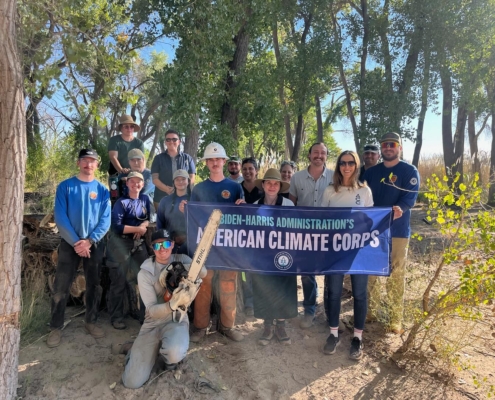
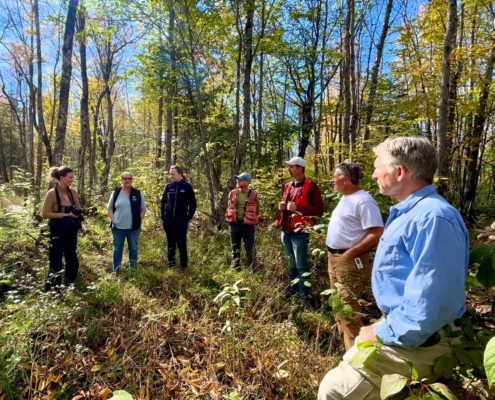
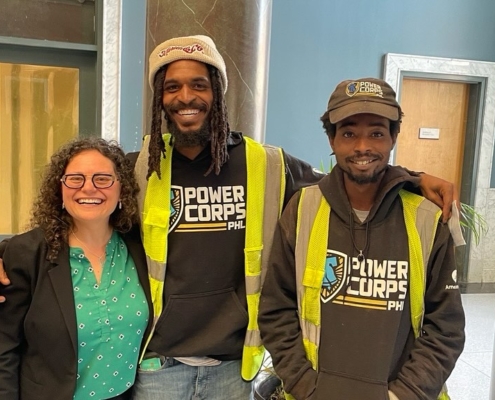
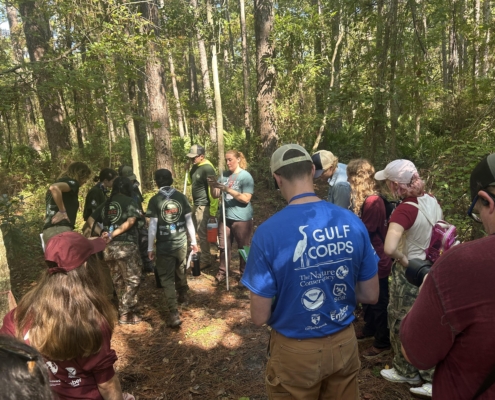
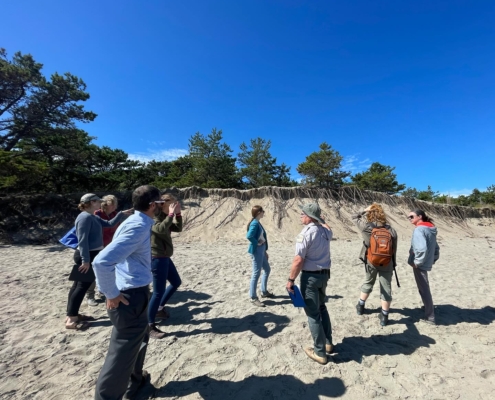


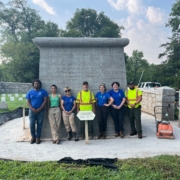

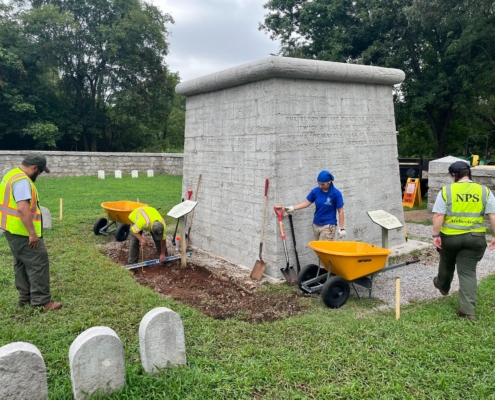

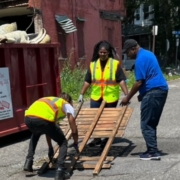



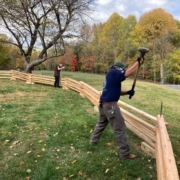
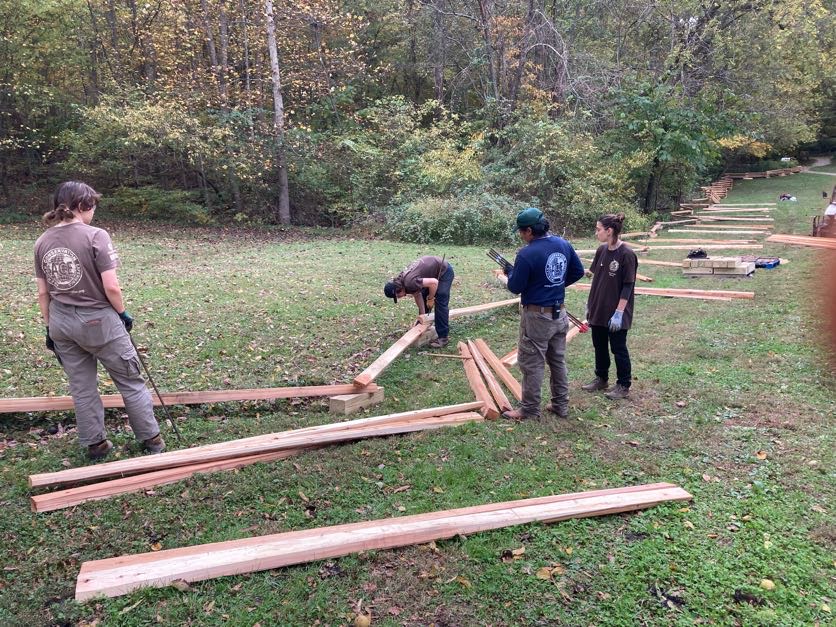


 Dana Stein, the executive director of
Dana Stein, the executive director of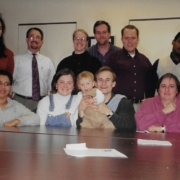
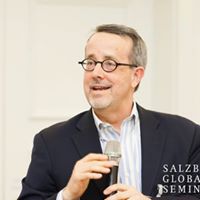 Andrew Moore was introduced to the Corps movement in 1987 when he joined the Human Environment Center (HEC) as a staff member. At the time, HEC served as the fiscal agent for The Corps Network’s predecessor, the National Association of Service and Conservation Corps (NASCC).
Andrew Moore was introduced to the Corps movement in 1987 when he joined the Human Environment Center (HEC) as a staff member. At the time, HEC served as the fiscal agent for The Corps Network’s predecessor, the National Association of Service and Conservation Corps (NASCC).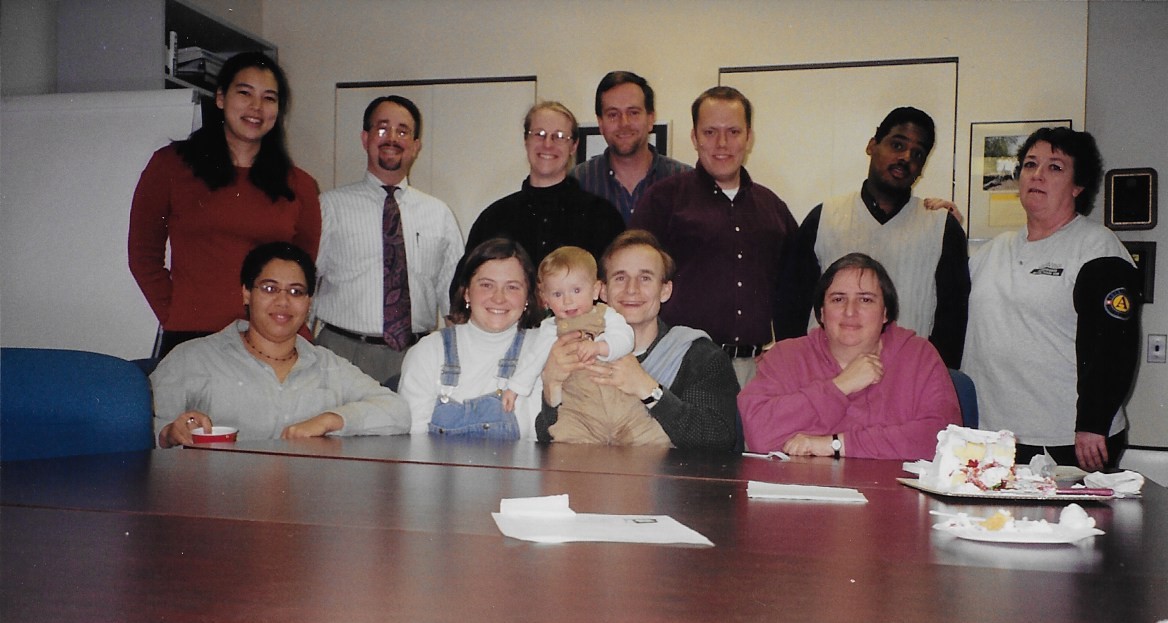
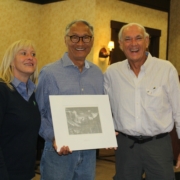
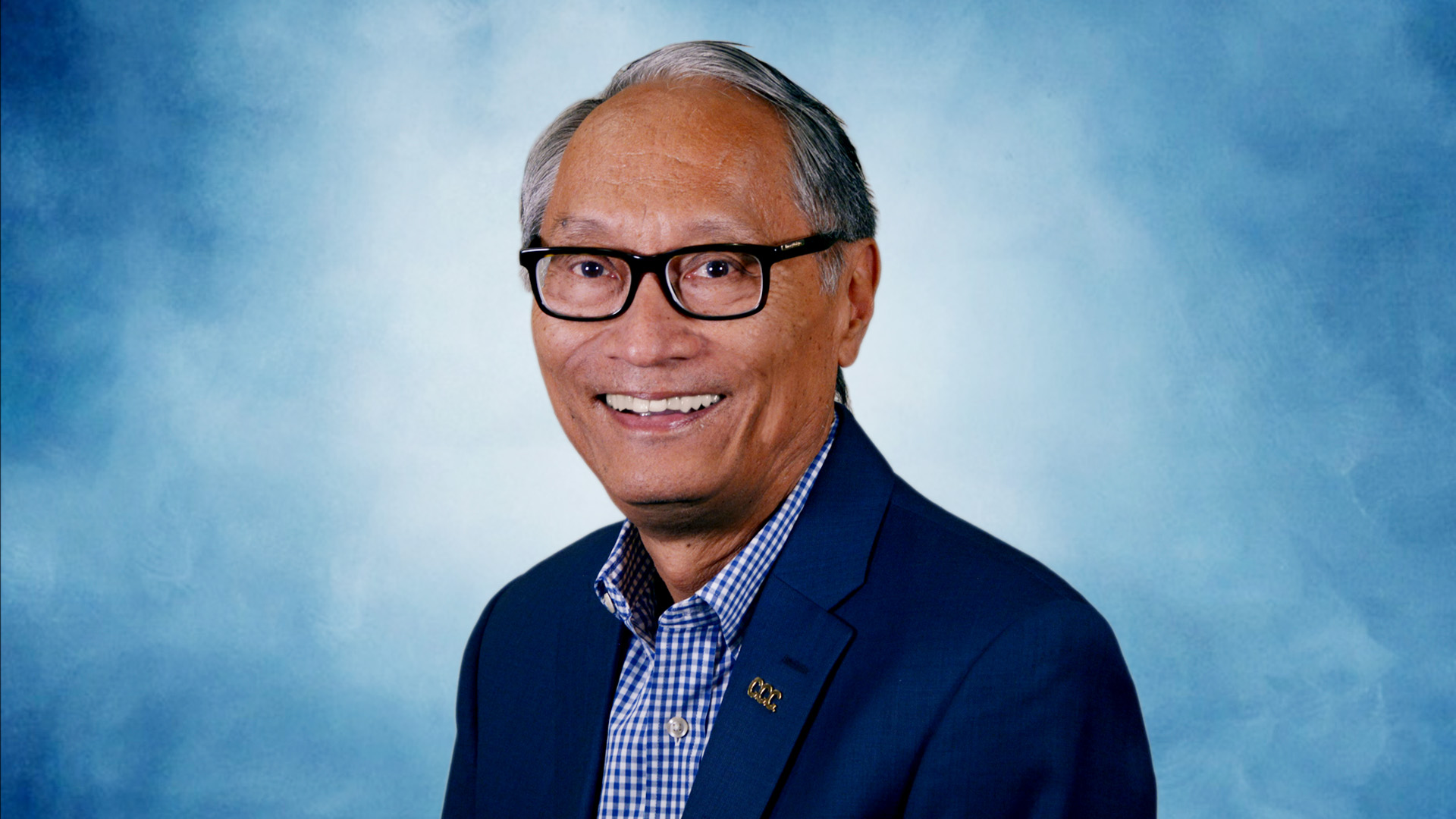
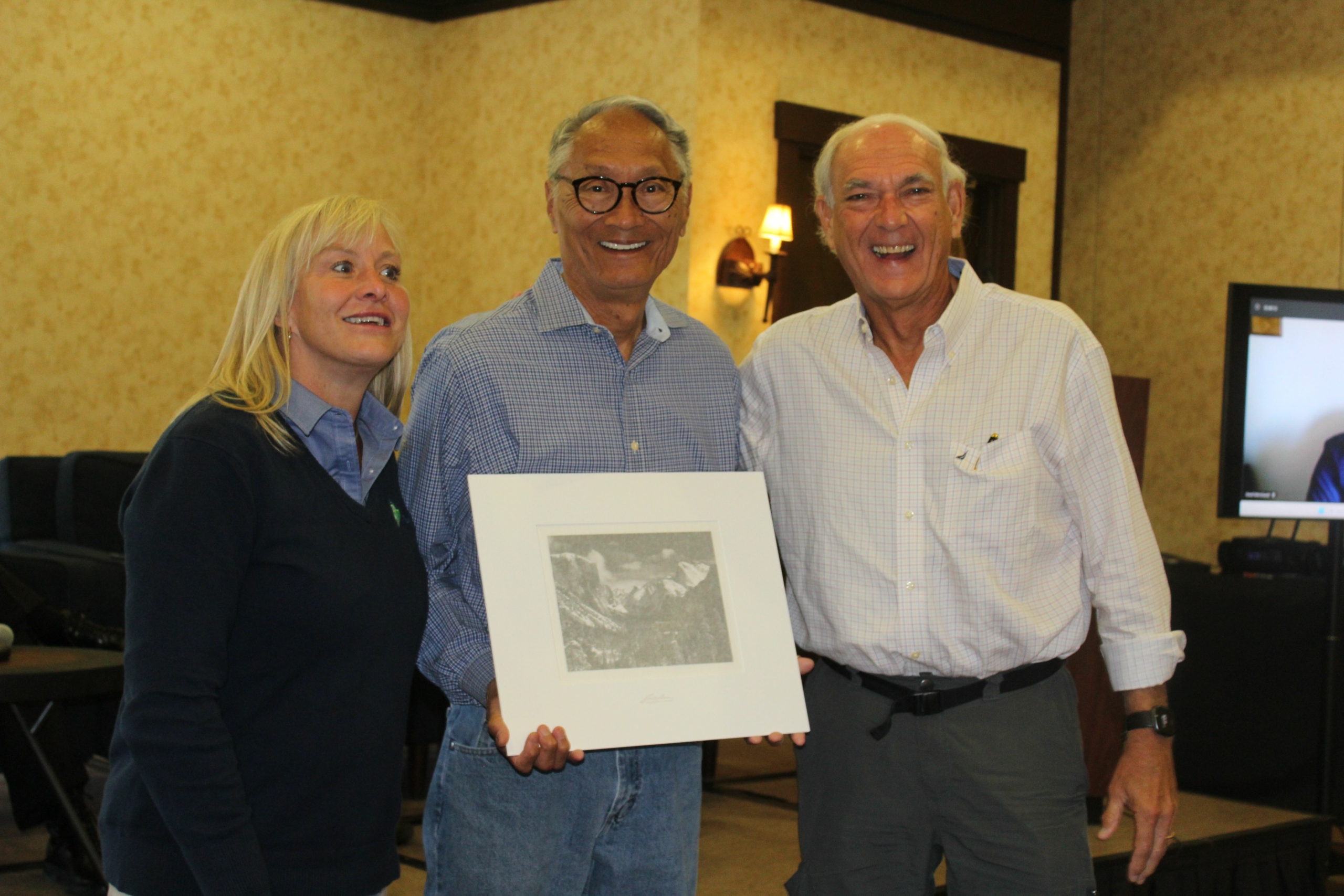 Bruce Saito with Mary Ellen Sprenkel and Derrick Crandall at The Corps Network Board Retreat, August 2023
Bruce Saito with Mary Ellen Sprenkel and Derrick Crandall at The Corps Network Board Retreat, August 2023























